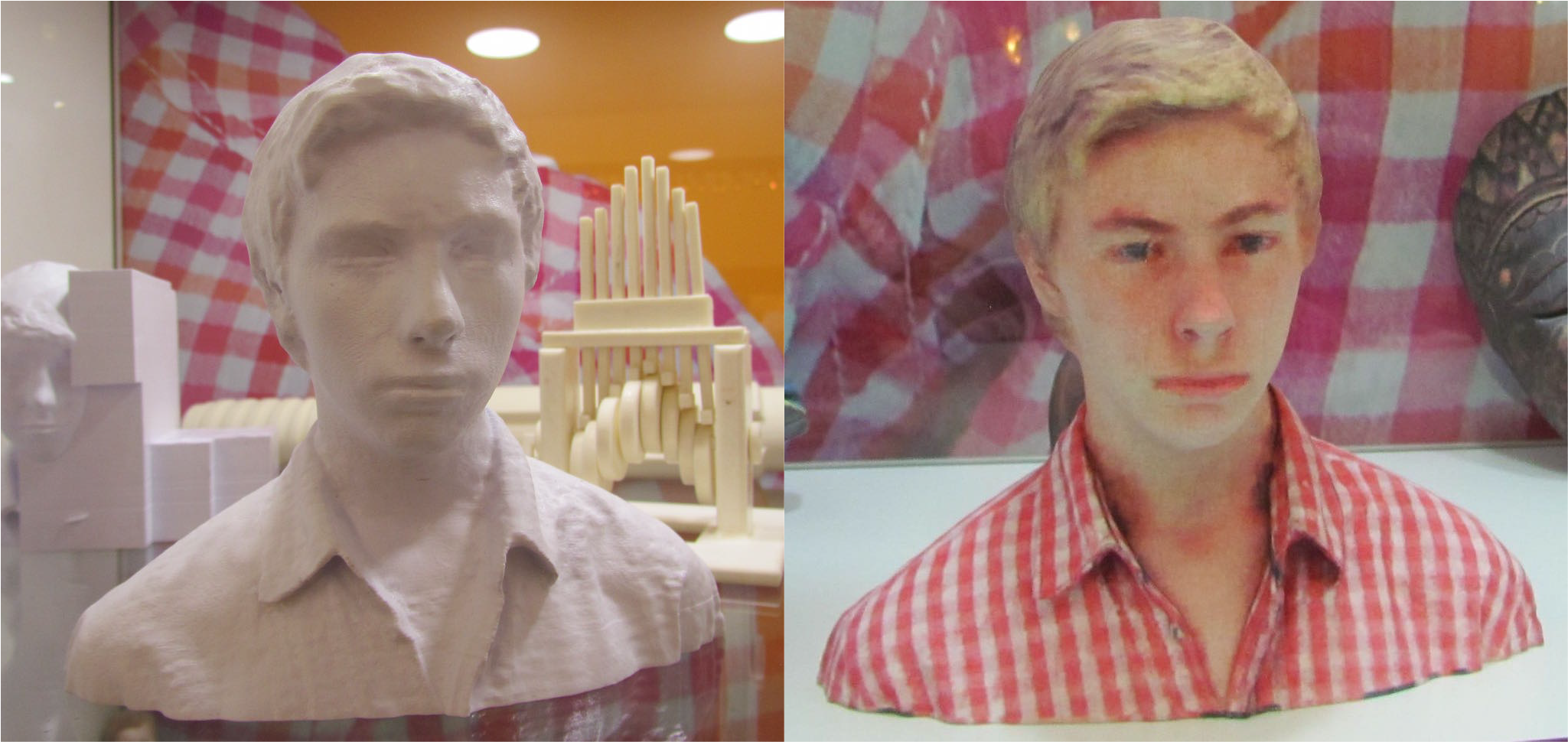
3D prints typically are monocolor; white, black or grey, fluorescent nuclear green if you’re lucky. But does full RGB color add much?
If you’re 3D printing components or parts for use in a machine, probably not. The value of those prints is typically the function provided by the shape and strength and has little to do with its appearance.
On the other hand, if your print’s purpose is visual there’s more to the story. Consider the side by side views of the print in the image at top. These were in fact, the same 3D model printed once in monocolor and again in full color, both on an MCOR Iris color 3D printer.
The paper-fueled Iris is able to produce color by pre-printing appropriate colors on the object’s edges of each paper sheet used by the machine to construct the print.
In spite of identical resolution, the colored print appears to be “better”, since additional visual information is conveyed by the color applied to the second print. Information that one is familiar seeing in real life: tones, reflections and shadows match reality in a much more direct manner than the monocolor print. Details such as the slightly visible layering on the monocolor object are virtually invisible on the colored model, obscured by the object’s textures because your eyes have more things to focus on.
Is color valuable? Depending on your application, it could very well be.

